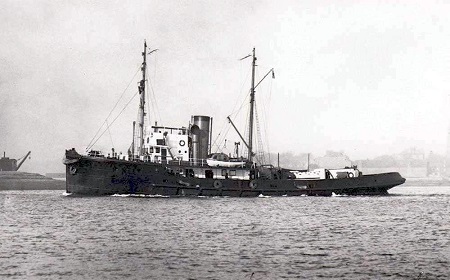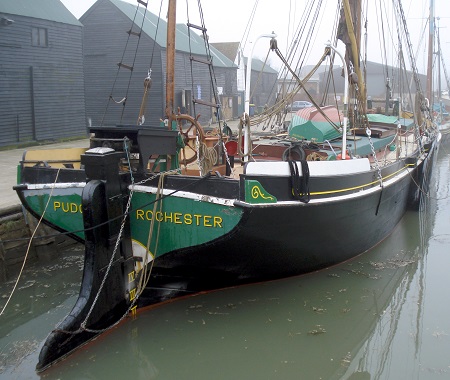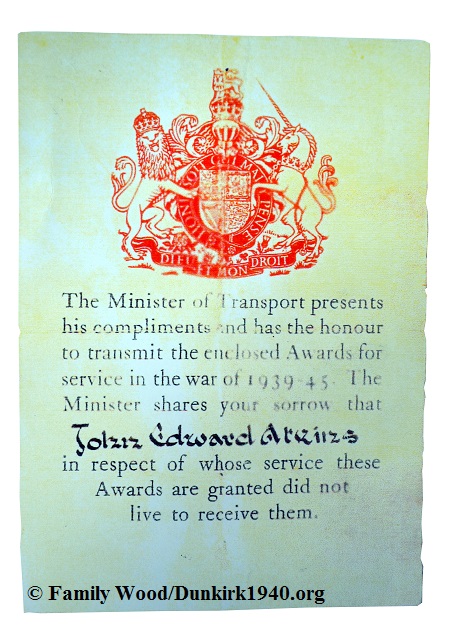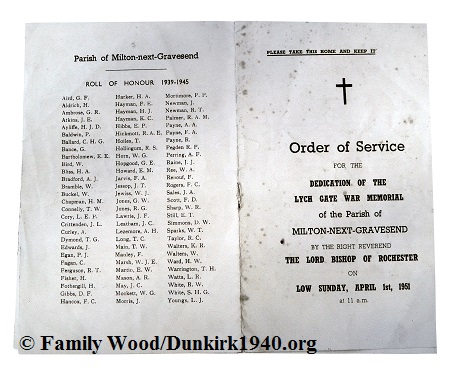Before continuing, we should give you some additional information about H.M.T. St. Fagan. The St. Fagan was part of the Saint Class of ocean-going admiralty tugs. Built in 1919 and displacing 860 tons, she was a relatively large vessel. The tugs were designed for use in the recovery of damaged warships and merchantmen in times of war, while also being used to tow gunnery targets for the capital ships to practice on in times of peace. The St. Fagan had a compliment of 30 and was capable of a speed of 12 knots. For protection, she was armed with a 12-pounder Q.F. gun.
The St. Fagan. To learn more about the Saint Class of Admiralty Tugs please click on the image.
Along with the St. Fagan, the explosion also sank the barges Lady Rosebery and Doris. The barge Pudge was also close by when the explosion happened and was physically lifted out of the water by the blast before, in the words of her skipper,
"she came down the right way up"
Pudge immediately launched her tender to look for survivors, among whom was a stoker from the St. Fagan who had been blown clear of the wreck by the force of the blast; he was the only survivor to have been below decks at the time of the incident. Now alone and taking on water from damage sustained by the blast wave of the explosion, Pudge turned for home where she was later taken under tow by the tug Tanga, who brought her safely into port at Ramsgate.
Pudge pictured at her mooring in Maldon, Essex. Please click on the image to visit the website of the Thames Sailing Barge Trust, who own and operate Pudge today.
John, like so many of those who were involved in the war at sea, has no known grave. In the aftermath of Dunkirk there was much coverage in the Press about his story. He is listed on the Gravesend Roll of Honour and has an entry on the memorial at Tower Hill in London (panel 63) that records the names of 24,000 merchant mariners who gave their lives during World War Two. Like many families, John's parents were frantically searching for information on what had become of their son. As part of the collection of documents, we have a number of letters (some dated from the period immediately following his death) in which they were searching for answers about the events of that morning. We have quoted from the letter of 1943, because it is not only a first-hand account, but also the most complete in its details of the event. As one might suspect, the official information, as issued from the levels of a more detached Civil Service on behalf of the Government, offers little in the way of the type of information a grieving family would be seeking.
As John was officially under the command of the Royal Navy at the time of his death, he was awarded two medals, the 1939-1945 Defence and the 1939-1945 Star, issued by the Ministry of Transport.
As we stated at the beginning, the family have been extremely active in retaining everything associated with John's story and without their kind assistance we would not be able to present this information here. The team at Dunkirk 1940 would again like to extend our grateful thanks for their permission to include his story in the museum.
